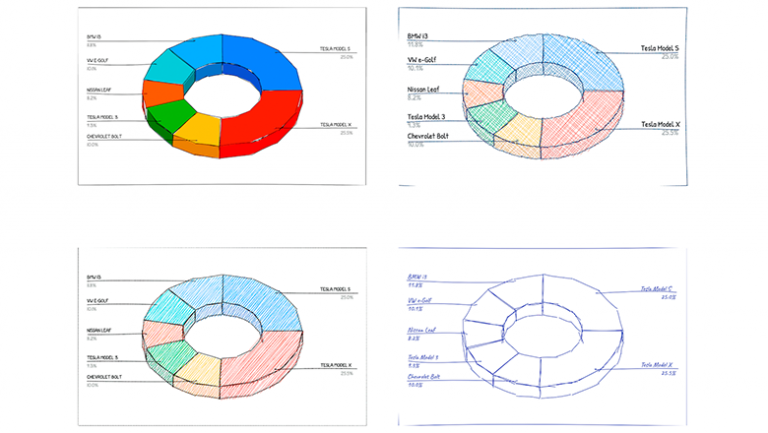Mathematical modeling of technological objects and systems through the eyes and hands of a student
As part of our ongoing series of articles on the topic of mathematical modeling, we are pleased to introduce you to a new model developed based on the REPEAT software. This model represents the methodology for extrusion production of synthetic filaments.
Our energies are usually focused on research and design in the field of nuclear and thermal energy, but we welcome and appreciate the opportunity to go beyond the standard limits and expand our horizons through the Modeling School project. This model and article were developed by a talented student, Anastasia, from the Russian State University. Kosygina.
We hope that this material will interest you and allow you to look at the synthetic thread production process from a new point of view, as well as understand all the advantages of using our REPEAT software in these tasks.
Link to telegram channel REPEAT: https://t.me/repeatlab
MODEL FOR PRODUCING SYNTHETIC THREADS BY EXTRUSION METHOD
Strakhova A.O. 4th year student, Institute of Mechatronics and Robotics, department
RSU named after A.N. Kosygina, Moscow
The article presents a model developed on the REPEAT platform for producing synthetic threads by extrusion for the production of spunbond, which is capable of accurately describing thermal processes, as well as cooling processes of the mixture in the extruder.
Synthetic thread is a fiber created chemically from man-made materials such as polyesters or nylons. Such fibers are most widely used in the production of sportswear, technical fabrics, medical materials, etc.
Synthetic yarns can be produced by several methods such as: knitting, injection molding, intersectional weaving and electrostatic spinning. However, the most common method is extrusion.
Extrusion is a molding method in which material is pressed or extruded through an opening in a special mold to create a product with a constant cross-section.
The production of synthetic threads by extrusion has several advantages over traditional weaving. This includes greater automation of the process, the ability to create lighter and stronger materials, and a wider range of possible characteristics such as elasticity and resistance to different operating conditions.
The extrusion method for producing synthetic fiber is important for several reasons:
High productivity: Extrusion allows the mass production of synthetic filaments, providing efficiency and cost savings.
Precise dimensional control: The extrusion process allows precise control of the diameter and shape of synthetic fibers, which is important for achieving certain material characteristics.
Variety of materials: This method is suitable for a variety of synthetic polymers, allowing the creation of fibers with different properties such as strength, wear resistance, heat resistance and others.
Application flexibility: Extruded synthetic fibers are used in a variety of industries, from textiles and packaging to automotive and medical, due to their versatility and adaptability to different needs.
The nonwoven fabric production line includes three stages: melting polymer raw materials in an extruder, layer formation and bonding.
This development relates to the first stage, namely the production of chemical fibers using an extruder.
The functional diagram of extruder automation is shown in Figure 1. Polypropylene granules are fed into a sheet steel hopper, which are then melted in the extruder. To heat the housing, electric heaters are installed in the walls. Cooling is carried out by circulating water in the system, which passes through the channels. The change in motor rotation, the temperature of all three heating zones, as well as the temperature in the forming head are measured by corresponding sensors. A three-phase asynchronous motor is used as a drive.
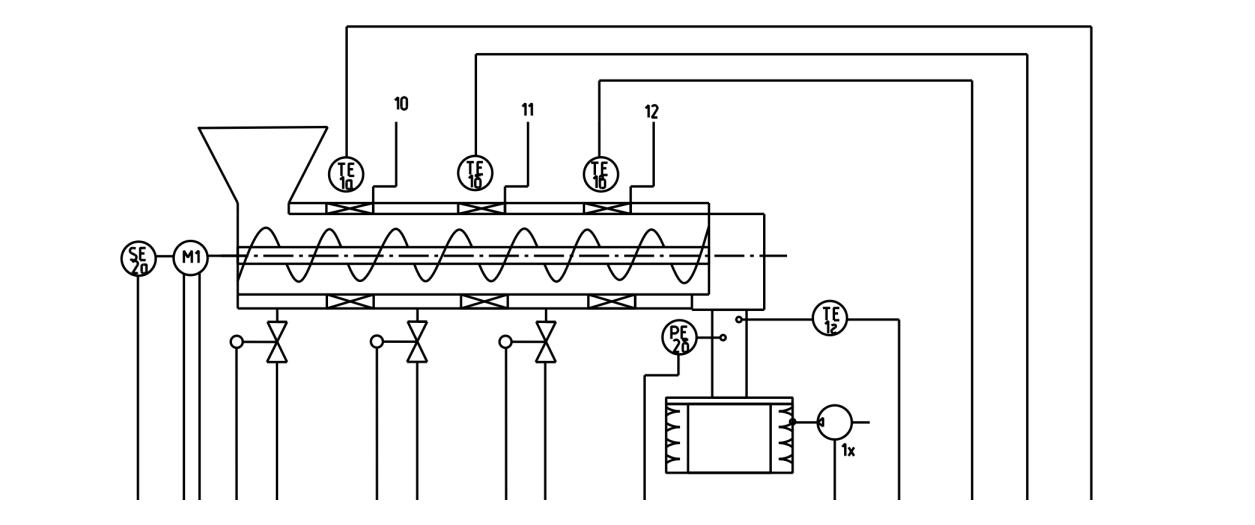
System description equations
Extruder heat balance:

The drive power and the supplied thermal power are spent on heating the mixture, on losses to the environment and on the formation pressure.
The temperature change in each zone is carried out within the following limits:
1 heating zone: 145 °C, 2 heating zone: 160 °C, 3 heating zone: 180 °C.
The power supply of the heating elements (NE) is spent on changing the temperature of the extruder walls and transferring heat from the walls of the extruder to the mixture. Transfer function for temperature in the control zone. pace. (transfer function of heating elements)

The thermal power given off from the walls of the mixture extruder is spent on heating the mixture from the initial temperature to the temperature of the mixture and accumulating heat by the mixture.
Transfer function describing the transfer of heat from the extruder to the mixture:

Cooling power is spent to reduce the wall temperature


Drive transfer function:
An asynchronous motor controlled by frequency conversion is used as a drive.

Transfer function describing the change in temperature due to shear deformation:

In the circuits for regulating the temperature of the extruder walls by zone, it is advisable to use PI control. In the water cooling circuit there is a relay.

Modeling stage
To simulate automated processes, the “Inertial Link”, “Switch”, “PID Controller” and “Amplifier” blocks from the “Automation” library are used (see Figure 2).

The developed model is fully presented in the general diagram below (see Figure 3):
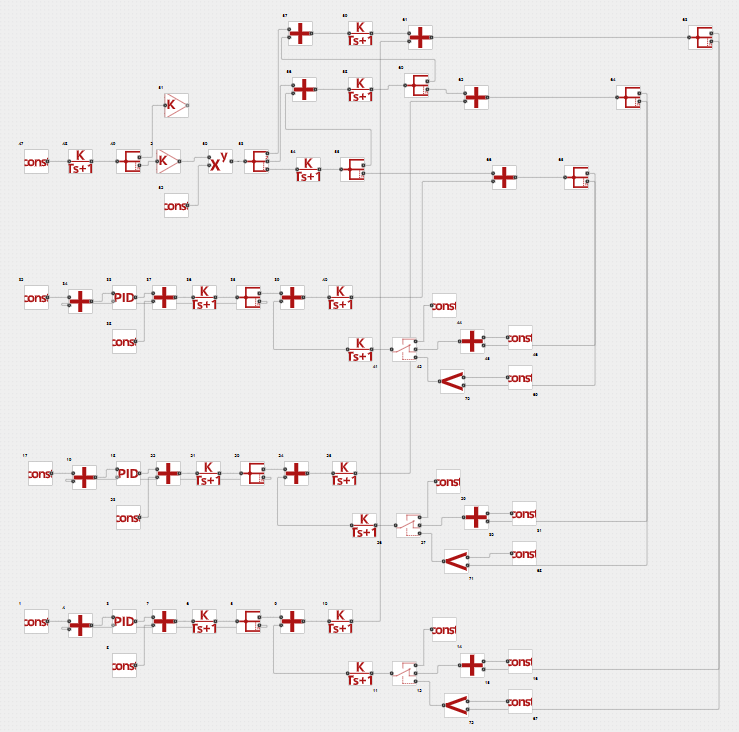
Simulation results
The simulation results are presented in the corresponding graphs (Figure 4-7).
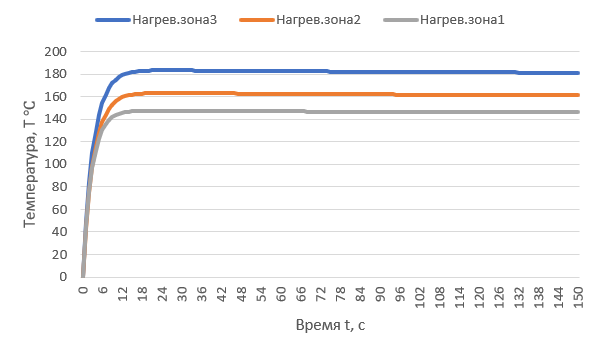
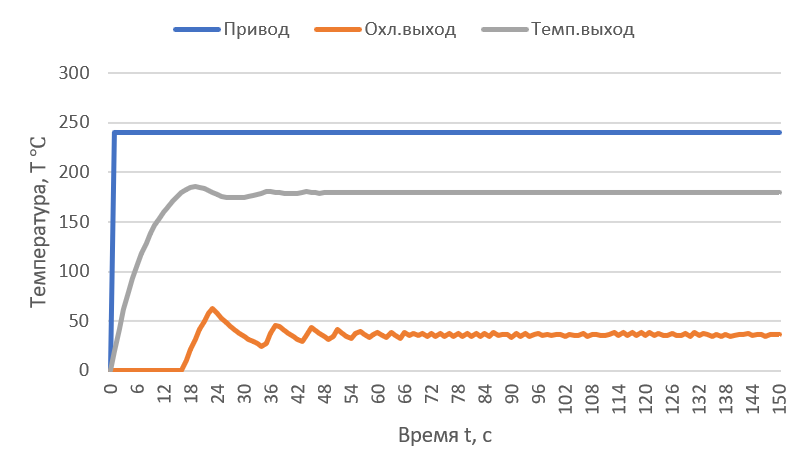
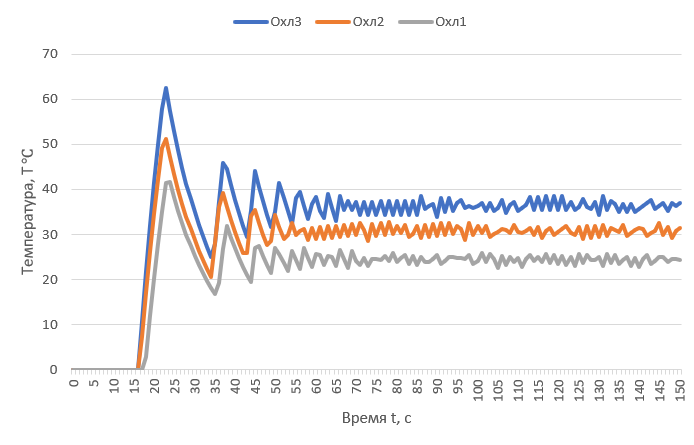
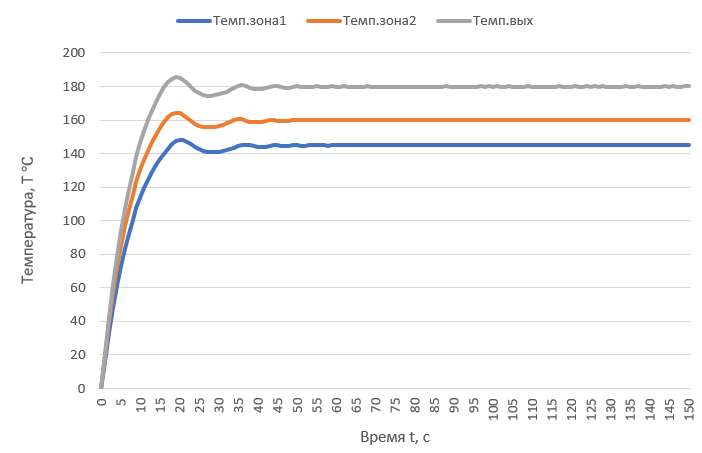
REPEAT allows you to study in detail the progress of physical processes in various modes in any system with high accuracy, including critical scenarios. These functionalities allow operators to carry out tests by making changes to parameters without interrupting calculations. The simulation results can be used to make technological decisions to optimize the granule melting system in the extruder, which will ultimately contribute to the production of fibers with the required properties for their further use.
Mathematical modeling in extrusion improves efficiency, accuracy and control in production processes. The obtained controller settings can be recommended for setting up control systems for single-screw extruders with external water cooling.


